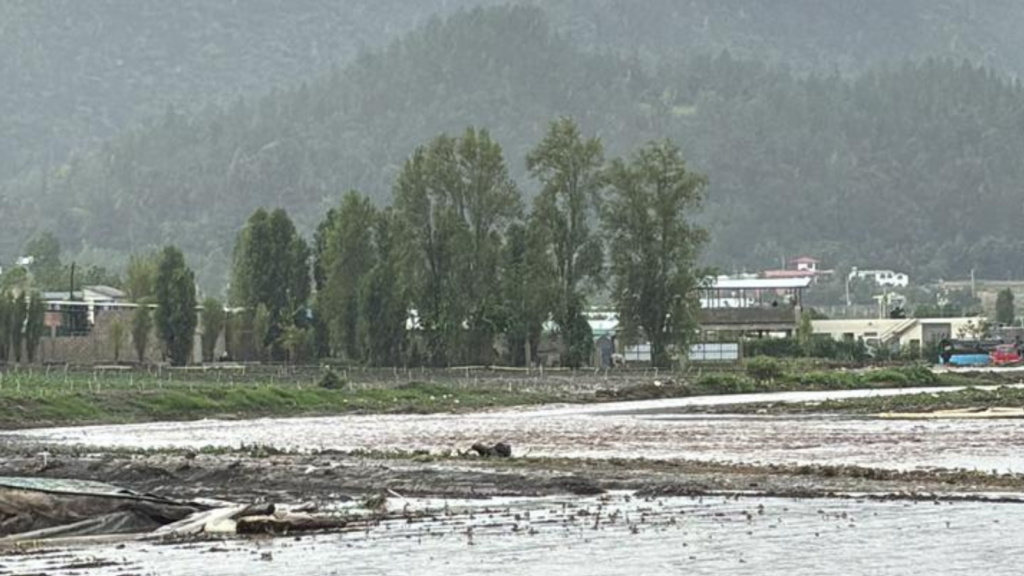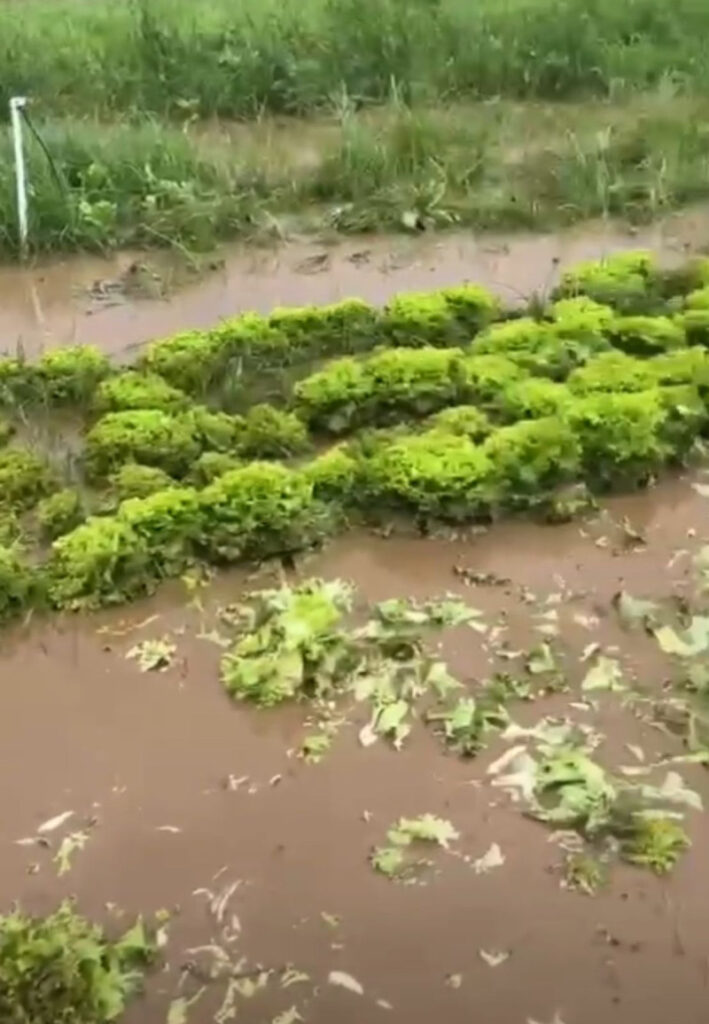The images were shocking: mass flooding. From the skies, hundreds of crops could be seen underwater. Two weeks after interviewing a farmer from the area who was affected by significant flooding, his predictions came true.
A few days into the hurricane season, hundreds of crops in the area were flooded due to heavy rainfall on the 5th and 6th of June this year. In the case of Juan Diego Gómez Quezada, a farmer from Constanza, he lost almost all his crops, from broccoli to celery. The rains also destroyed his irrigation systems, hoses, and pipes.

“Why didn’t they act sooner? Why didn’t they take preventive measures? Now they want to act after the situation has occurred,” Gómez Quezada explained.
He added that he had repeatedly visited the headquarters of the Ministry of Environment and Natural Resources in the region to channel areas with accumulated waste, but he was not allowed to do so.
“It’s frustrating that more than a year ago I went to the Ministry of Environment in Constanza to request permission to channel the river that borders my farms, offering to pay for the equipment myself, just for them to grant me a permit, and they denied it,” Gómez Quezada added.
According to Gómez Quezada, he has lost at least three million Dominican pesos, or about 50,000 US dollars, so far in June alone.
Reports from the Ministry of Agriculture indicate that losses in the agricultural sector due to the flooding caused by Hurricane Fiona in 2022 exceeded 1.6 billion Dominican pesos, or an estimated 26 million US dollars. The losses recorded in November 2023 resulted in damages to agricultural livelihoods exceeding 470 million Dominican pesos, or more than 7 million US dollars.
Daniel Valerio, a climate change specialist from the Food and Agriculture Organisation of the United Nations (FAO), shared that the recent floods have directly impacted the agricultural sector, resulting in the loss of crops and harvests, the loss of animals and their production, and a reduction in the income of producers and their families due to the loss of their livelihoods.
“Family farmers are the most affected due to their high degree of vulnerability and limited capacity to prepare and respond effectively to these extreme events,” warned Valerio.
He added that the lack of oxygen in flooded soils limits essential physiological processes of the crops and, therefore, increases the amount of harmful elements, causing losses in a short time.
When these atmospheric events occur, they can affect the availability of production, which can have effects on prices for the domestic market, directly impacting the population, especially the poorest, who allocate a higher proportion of their income to food purchases, stated Valerio.
“On the other hand, it affects the volumes and quality of production for the export market, reducing the income of those producers, the country’s trade balance, and the generation of foreign currency. Additionally, climate uncertainty can hinder long-term planning for producers and exporters, potentially affecting the competitiveness of the Dominican agricultural industry in international markets,” Valerio said.
He explained that if this occurs frequently, it could lead to producers reducing their crops or obtaining lower yields, negatively affecting food security.
“Food security depends both on the availability of food in a country and on people’s economic access to buy it. Extreme weather events, such as droughts, floods, and hurricanes, can reduce food production due to the loss of crops and livelihoods, as well as damage to agricultural infrastructure,” noted the FAO expert, adding that as a consequence, it could generate food shortages in the market and increases in product prices, affecting access to food for the population, especially those in more vulnerable situations.
In the same context, a study launched by World Vision of the Dominican Republic notes that 79% of household leaders expressed a deep unmet need for food after a climate emergency, especially in the most vulnerable areas. An example of this was that, according to World Vision RD and the nonprofit organisation Food For The Poor, for Hurricane Fiona, which affected the eastern region of the Dominican Republic in September 2022, 80% of household leaders borrowed money to buy food, “reflecting a long period of recovery of their livelihoods after the climate emergency.” Meanwhile, 17% expressed being forced to sell their belongings and personal items to feed themselves properly.

The Dominican Republic is one of the most vulnerable to climate change, according to the FAO. “The country’s risk profile makes us vulnerable to multiple threats, such as climatic, geological, health, and anthropogenic, which converge with social, economic, and demographic factors, exacerbating the risk conditions of millions of Dominicans,” explained Isabel Hernández, national coordinator for Humanitarian Affairs and Emergencies of World Vision.
Valerio said that if the country does not change the food system, it will be difficult to reduce emissions, reduce food losses and waste, or achieve the adaptation of production to new climatic patterns.
“But that requires greater investment in technologies and financing mechanisms so that producers can modernise their farms. Here, the role of financial institutions is fundamental. Financing mechanisms adapted to the sector and this new resilient agriculture are needed. For example, having flexible agricultural insurance, using advanced technologies to assess risks and damages, and offering subsidies to make them more accessible and attractive to farmers,” admitted Valerio.
Additionally, he recommended that farmers transform their agri-food systems towards more resilient, efficient, and inclusive models capable of producing food sustainably to meet the growing population’s demand in the face of a changing climate.
—
This story was originally published by Listin Diario, with the support of the Caribbean Climate Justice Journalism Fellowship, which is a joint venture between Climate Tracker and the Open Society Foundations.